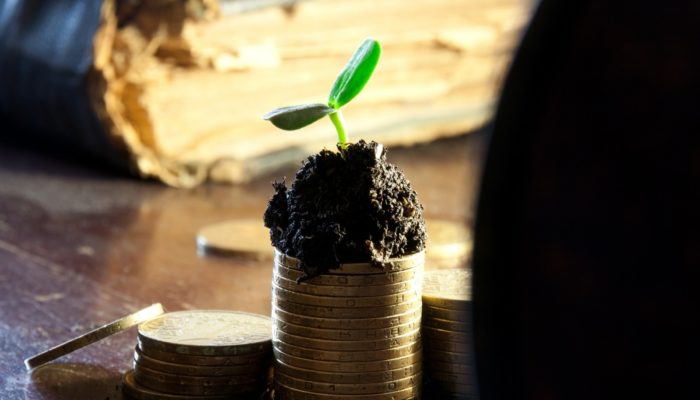
Soil is a fragile and finite natural resource that must be carefully managed and protected to ensure future food and fiber provision as well as delivery of many other ecosystem services such as water purification or flood regulation [1]. Soil health and preservation at global scales has been receiving increasing attention, for example, in discussions at the 2019 UN climate conference, COP25 in Madrid. Backed by robust scientific evidence, COP25 sought support for new programs in which soil scientists are (and must be) included. It was during COP21 in 2015 with the Paris Agreement when it was recognized that agricultural soils play a significant role as sinks and sources of carbon and the 4 per 1000 Initiative “Soil for Food Security and Climate” was launched. Despite persistent skeptical opinions due to lack of awareness, climate change is being accelerated exponentially and the role of soil organic carbon in the global carbon cycle is gaining visibility and relevance in politics. However, soil carbon is only one of many important aspects of soil health that we should be paying attention to. There is work for everybody. Developed nations should reconsider their industrial agriculture models and start managing their soils towards higher quality in terms of erosion susceptibility, drought resilience, and soil biodiversity. Special attention should be paid to developing nations which are most vulnerable to climate change effects and still struggle to provide enough food and clean water to support livelihoods of their communities. We should all look together for innovative solutions that can maintain, restore and actively improve the quality of our soils, which can support ecosystems and human well-being in the long-term. So let’s start in our “backyard”.
What is the status of soils in Europe?
European soils face several threats which include soil erosion, soil organic matter decline, soil compaction, loss of soil biodiversity, soil and water pollution, salinization, soil sealing, and desertification [2]. Soil erosion by water is the most prominent form of soil degradation in Europe although wind erosion also affects certain areas. It is estimated that EU countries lose 970 M tonnes of fertile soil every year which is equivalent to a loss of 1 meter of soil from the area of Berlin [3]. A thousand years can be required to produce 1 cm of fertile soil which can be lost in only a few years [3]. Almost a third of European agricultural areas have erosion rates higher than the sustainable rates (2 tonnes per hectare per year) and 11% of EU soils are affected by moderate to severe water erosion [2].
As elsewhere in the world, arable soils of Europe are depleted in soil organic matter (SOM) when compared to both grasslands and natural soils. Intense cropping, tillage and insufficient use of cover crops and organic fertilizers contribute to SOM decline in well-drained agricultural soils while drainage is the major driver of SOM decline in waterlogged soils. It is estimated that around 75% of EU’s arable land have less than 2% organic carbon [2]. They contain only about a quarter of the organic carbon found in natural soils and less than half of what grasslands store [2], which means that if properly managed, carbon could be stored in these soils while concurrently improving their quality.

The CAP reform process has now restarted. It is therefore time to act on urgent challenges and address citizens’ demands for sustainable agriculture, using the full breadth of available scientific evidence and knowledge.
What is the European Commission doing for soil conservation?
The Common Agricultural Policy (CAP) is a common policy for all EU countries and has been in place since 1962. An expensive policy, even though its relative cost has been decreasing over time, CAP represented more than a third of the EU’s budget in 2018.
The original objectives of CAP were to support farmers and their standard of living in order to ensure a stable supply of affordable food to EU citizens, and maintain rural areas and landscapes across the EU. Increasingly, it has been recognized that CAP also has great potential to assure better standards of soil management by requiring farmers to apply good farming practices in order to be eligible for subsidies. To some extent, this potential is already being embraced in the two main pillars of CAP since its reform in 2003. Pillar 1 consists of direct payments and market measures and pillar 2 concerns rural development policy. Under the first pillar, farmers are required to maintain landscapes in the so-called “Good Agricultural and Environmental Conditions”. These standards are aimed at building-up soil organic matter, enhancing soil biodiversity, reducing soil erosion and protecting water resources. In addition to these requirements, part of the direct payments available to farmers are conditioned by applying ‘greening measures’. These sustainable farming measures are practices such as crop diversification, maintaining permanent grassland and dedicating 5% arable land to Ecological Focus Areas such as trees, hedges or land left fallow to support biodiversity and soil regeneration. More support can be obtained by farmers from the second pillar within rural development schemes which are developed by each member country.
On 1 June 2018, the European Commission presented a proposal on the future reform of CAP for the period after 2020. The new CAP promises to be more ambitious in terms of environmental care and climate action. Firstly, the mandatory requirements with which farmers have to comply will be further strengthened. New obligations will include: (1) preserving carbon-rich soils through protection of wetlands and peatlands, (2) nutrient management to improve water quality and reduce ammonia and nitrous oxide levels and (3) crop rotation instead of crop diversification. In addition, farmers will be rewarded for going beyond mandatory requirements. For these, each member country will develop their own system of eco-schemes and agri-environment-climate measures to incentivize farmers towards practices that fit the local context of each country. Digitalization and precision agriculture receives attention in the future CAP as an important tool to optimize soil fertility and reduce pollution by supporting better farm management and matching fertilizer inputs with actual plant nutrient requirements. Despite the on-going “greening” of CAP, scientists in a recent critical statement demand that EU is even more ambitious and rather than light green aspires for dark green.
The agricultural European Innovation Partnership (EIP-AGRI) was launched by the EU in 2012 as a platform to bring together farmers, advisors, researchers, businesses, and NGOs to support innovation in agriculture. EIP-AGRI supports innovation towards competitive and sustainable farming and forestry that ‘achieves more and better from less’ and contributes to ensuring a steady supply of food, feed and biomaterials in harmony with the essential natural resources on which farming depends.
The European Soil Data Centre (ESDAC) is a thematic centre for soil-related data in Europe. Its ambition is to be the single reference point for and to host all relevant soil data and information at European level. It contains a number of resources that are organized and presented in various ways: datasets, services/applications, maps, documents, events, projects and external links. It also releases a newsletter.
Get involved!
If you are a soil scientist or just a soil enthusiast, you might be wondering how to become updated or even involved in what the EU does for soil conservation. Firstly, anyone can access countless online resources, newsletters and social media channels (Twitter, Facebook, websites, etc.), links to some of which are provided below.
Secondly, the European Commission regularly launches initiatives and queries to discuss certain topics to which you can contribute regardless of your scientific or professional background. The most recent one addresses the area of “Soil Health and Food” as part of the next research program Horizon Europe. We encourage you to complete the survey and let them know what you think.
Finally, we encourage all colleagues in our field to consider supporting the above-mentioned scientific statement generated by a group of 21 authors that call on the European Parliament and the EU’s Member States to more strongly address environmental and sustainability challenges in the next reform of CAP. If you are concerned about agricultural sustainability and the role of the CAP post-2020, take a look at the specific demands described in the full statement that will be published soon as a position paper in People and Nature. Scientists can join the statement before the extended deadline* of Wednesday, 19th of February, 23:00 CET on the website of the German Centre for Integrative Biodiversity Research (iDiv).
*Deadline extended on 14.2.
Useful links
Common Agricultural Policy:
- Website: https://ec.europa.eu/info/food-farming-fisheries/key-policies/common-agricultural-policy_en
- Twitter: https://twitter.com/EUagri (follow the hashtag #FutureofCAP)
EIP-AGRI:
- Website: https://ec.europa.eu/eip/agriculture/en/about
- Twitter: https://twitter.com/eipagri_sp/
The European Soil Data Centre (ESDAC)
- Website: https://esdac.jrc.ec.europa.eu/
- Newsletter: https://esdac.jrc.ec.europa.eu/newsletter
References
[1] http://www.fao.org/resources/infographics/infographics-details/en/c/284478/ http://www.fao.org/soils-portal/about/en/
[2] https://ec.europa.eu/info/sites/info/files/food-farming-fisheries/key_policies/documents/cap-specific-objectives-brief-5-soil_en.pdf
[3] https://ec.europa.eu/info/news/soil-matters-our-future-2019-dec-05_en
Acknowledgments
Authors thank Avni Malhotra for proofreading this blog post.
Written by:
Layla is a PhD student at the Institute for Natural Resources and Agrobiology of Seville, Spain (Spanish National Research Council; IRNAS-CSIC). Her research focuses on soil organic matter carbon turnover rates in representative Mediterranean soils from southern Spain. She is currently one of the blog editors of the EGU Soil Science System Division Blog and also collaborates actively with social media outreach.
Olga is a MSCA-IF funded postdoctoral researcher at the University of Antwerp. Her research interests lie primarily in the areas of soil biogeochemistry, soil formation and restoration ecology. Under EGU Soil System Science Division, Olga is the Secretary for News and Outreach, webmaster and one of the blog editors.



